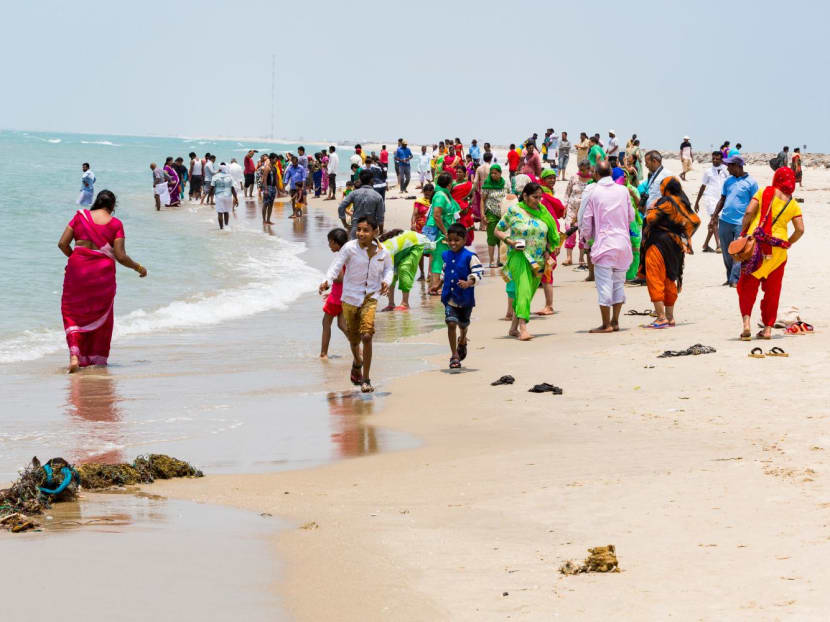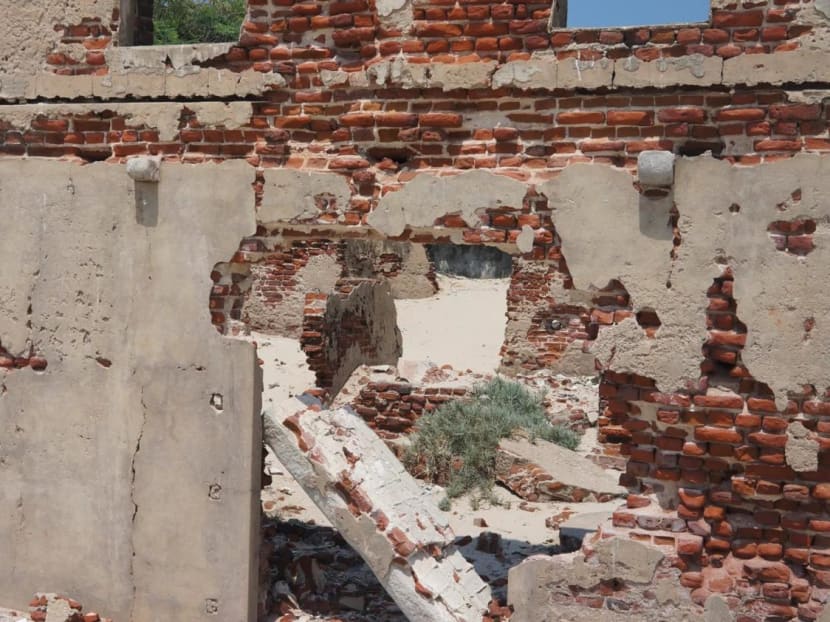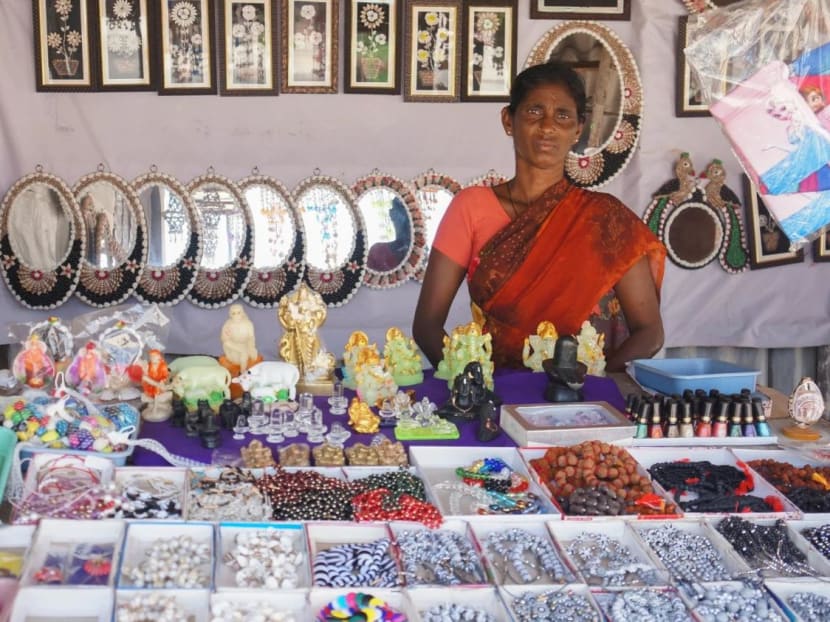Once a ‘mini-Singapore’, abandoned Indian town is attracting tourists again
HONG KONG — Mr Aravind’s yellow wooden fishing boat recently capsized in the Indian ocean, taking with it his wallet, ID cards and phone. He was lucky he didn’t lose his life, or his boat.

When a cyclone demolished Danushkodi, in India’s Tamil Nadu state in 1964, the town was more or less abandoned. The fishermen moved back first, and now tourists are visiting the town on the edge of India.
HONG KONG — Mr Aravind’s yellow wooden fishing boat recently capsized in the Indian ocean, taking with it his wallet, ID cards and phone. He was lucky he didn’t lose his life, or his boat.
“Everything else can be earned back,” says the 40-year old fisherman, with a cheerful grin.
The day began like many others — he and three friends had set off on a fishing expedition at around 5am in calm conditions. And then, suddenly, there was water everywhere, he says.
Mr Aravind lives in Danushkodi, a town at the end of a long spit hanging off the southeastern tip of Pamban Island — which lies just off the coast of southeast India’s Tamil Nadu state. Danushkodi has been abandoned by many of its residents but is again becoming a draw for tourists.
A mere 24km from Sri Lankan waters and lapped by the Indian Ocean and the Bay of Bengal, this semi ghost town is little more than a blazing strip of baked white sand and the ruins of other times. As Mr Aravind discovered, it is prone to violent changes in weather.
In December 1964, wild winds whipped over the Bay of Bengal and lingered over Danushkodi for days, becoming one of the most powerful cyclonic storms to hit India.
When it had passed, the government left the ruined Danushkodi as it was, to discourage people from living close to the sea, but it hasn’t stopped Mr Aravind and others like him from reclaiming their ancestral homes.

“There used to be more than 1,000 families in Danushkodi,” says Mr Vijidharan, a 25-year-old fisherman who also sells trinkets to tourists from one of a number of tiny stalls amid the ruins at the heart of Danushkodi. Now there are 300.
Before the 1964 Rameswaram cyclone (named for the main town on Pamban), Dhanushkodi had been a thriving town and a busy seaport, but “everything my grandparents grew up with — a church, the granary, the post office — it all came tumbling down like a house of cards,” says Mr Aravind.
“It’s a night that… had a deep impact on future generations,” says Mr Arumugam, who is in his mid-50s and has just returned from fishing with Mr Aravind.
“The incessant winds, the fury of the rain, the sheer helplessness when we were at the mercy of these elements — we’ll never forget these stories, because as fishermen, it gives us a healthy respect for nature. And fear as well.”
During the 1990s, while Sri Lanka’s civil war raged, a steady stream of refugees made their way to Danushkodi, often in dangerous conditions. More have been driven to cross the water by Sri Lanka’s current financial crisis.
The influx explains the military and naval presence in Danushkodi — there are officers everywhere. And occasionally they save the life of a hapless visitor. One officer blows his whistle as a tourist jumps over a strip of beach cordoned off by a rope to take a photograph.
“Those are unstable wetlands,” says the officer. “Put one foot wrong and you’ll sink into the quicksand.” The tourist beats a hasty retreat.

For many visitors, Danushkodi’s attraction lies in its remoteness, the sheer thrill of standing at the very edge of India.
“There are some breathtaking views, some of the best in India,” says Mr Sandeep Manikantan, 36, who works in the IT industry in Chennai and has come to Danushkodi to ride a motorcycle across the empty beach and do yoga on the bleached sands.
“It’s a great way to clear your mind and to rid yourself of negativity and stress.”
Others come to see what a ghost town is like. Amateur photographers and artists come to hone their skills, because it feels like you’ve entered a time warp.
Most tourists are Indian but people of all nationalities visit, locals say. Whoever they are, they must leave Danushkodi by nightfall, per government regulations.
Hotel accommodation, ranging from 2000 to 12,000 rupees (S$32 to S$196) per night, is about 8km away in Rameshwaram.

Stalls selling shells and trinkets line the road out of Danushkodi. One of them belongs to Ms Murugeshwari, 42, who set up shop here five years ago, after her husband, a fisherman, died at sea.
She points to the ruins — the post office, the grain store, the railway station, the hospital and the spire of the crumbling church — and says that life in Danushkodi, especially for women, is enormously stressful. In addition to selling souvenirs to travellers, she mends nets for other fisherfolk.
As fishermen have had to travel farther out to sea to chase dwindling catches, more pressure is being put on the women to make a living.
“It’s a constant battle with the elements as well as with human politics,” says another stallholder, Ms Parvati, 67, who came to these shores 40 years ago from Sri Lanka after her father — whose relatives lived in Danushkodi — died and her family fled civil war.
She held an Indian passport and although her journey by sea was tough, she returned legally.
Many don’t, though, and are held in a camp in Mandapam, on the Tamil Nadu mainland.
Crossing between the two countries was much easier in colonial times; The British operated regular ferries between Danushkodi and Talaimannar, in Sri Lanka.
Mr Vijidharan says that Danushkodi was so diverse at the time, with travellers from all over the world, that his grandparent’s generation called it “mini-Singapore”.
From beneath thatched roofs, his and other stalls sell seashell-studded mirrors, necklaces, bracelets, lamps, combs and baskets that gleam on wooden slabs like shimmering jewels. Wall hangings dangle from the ceiling and you can buy conches of various sizes and hues.
“My grandparents told me stories of the many travellers they’ve met here,” says Mr Vijidharan. Even the town’s drinking water was well planned, he says, pointing to the sleek, cylindrical wells that dot the sandy shores. “The water we draw from this even today is very sweet.”
Life in Danushkodi is being made more precarious by climate breakdown. Fish stocks are dwindling as a result of the warming waters and erosion in the area is happening on a large scale — whole islands are sinking into the sea.
“We know the dangers of living here,” says Mr Vijidharan. “The sea has swallowed up 5km of our lands. My grandparents said the homes of the people they once knew — friends and neighbours — are all underwater.
The government is afraid that the waters will eat further into the land and they urge us not to live here, especially as storms have been growing more frequent and intense in recent years.
“But for the many of us who are left, we can’t dream of living anywhere else. As imperfect as it is, this is our world.” SOUTH CHINA MORNING POST






